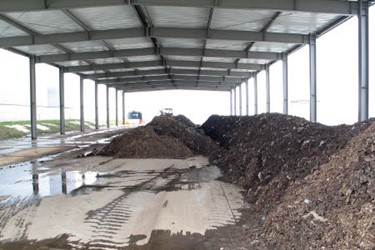Defining High Quality Biosolids: Exploring Options To Create A Market For Biosolid Products
By Kelsey Beveridge

Water resource recovery facilities (WRRFs) are already aware of the idea that biosolids can be a valuable commodity. Consequently, there is opportunity to grow this market. The use of biosolids can create products that have value and generate a customer demand that ultimately leads to an economic incentive for WRRFs. There are several factors that contribute to the success of biosolid products, like the quality of biosolids and information available about how and where to use high quality biosolids. Understanding the critical need to expand biosolid use and biosolid products, the Water Research Foundation (WRF) engaged in a research study to identify issues with biosolids by defining high quality biosolids (HQB) criteria and developing a market template to provide guidance for WRRFs to market their local products.
In the U.S., sanitary wastewater treatment produces wastewater solids that are denoted as unclassed, Class B, or Class A, which indicates the threshold of microbial pathogen production achieved during treatment. There are many benefits to recycling biosolids for land application. Biosolids have been used to improve soil properties, like reducing bulk density, pore size distribution, and improved biological properties. Biologically active substances in some biosolids may enhance plant quality directly or by stimulating the activity of microbes. Considering these benefits, the research team wanted to compare the use of exceptional quality (EQ) biosolids to demonstrate the merit of recycling biosolids for land-use application. The team evaluated parameters associated with odor potential, including respiratory activity and microbial population profiles.
Despite some of the possibilities for land-use applications, the greatest issue associated with biosolids is the odor where it is used on land. The standards for classification are driven by health and safety risk assessments that indirectly decreases the odor intensity, but there is no guidance or protocol to produce a lower-odor HQB. Currently, there isn’t a protocol to follow across the board that would minimize the odor. From a public acceptance perspective, this is important to encourage purchase and use. The research team developed an understanding of what characteristics and attributes are desirable for the market. The difficulty with odor is that there is no single metric to measure it, aside from the human sense of smell. The odor potential can be influenced by a broad range and combination of solids-handling processes and wastewater treatment characteristics. Concentration and pleasantness of smell are critical to determining what makes a product “user-friendly.”
For successful implementation of HQB use, it is imperative to understand the environmental impact and economic value for land uses. Potential groundwater and surface water impairment from excess nitrogen and phosphorus can be avoided if the availability and mobility of those can be determined for continually developing EQ products. In this study, EQ biosolid products were effectively used as organic N fertilizers. Biosolids were successfully blended with woody and mineral substrate to create byproducts that have ideal moisture content, which allows for handling and application. Woody organic matter reduced biosolids moisture and sand increased granular byproducts that permit ease of uneven application. In a Virginia field study, EQ biosolids can be used as soil amendment to improve soils and crop growth. The application will depend on the ability to estimate plant-available N. Based on the results from this experiment, the beneficial effects of EQ biosolid products on urban, low-fertility soils may lend itself to high application rates while still remaining safe as inorganic fertilizers.
In a utility survey with 28 participants, they were asked about how they market and sell their biosolid products. Eighteen of 28 utilities reported at least a portion of their biosolid products are given away to the public or pay to have their biosolids managed. Biosolids products sell between $10 and $90 per ton. Additionally, 18 utilities noted their product is “branded” to include a marketing effort on their website (11) or promoted on Twitter and Facebook (4). Most importantly, the survey identified what factors make for a successful biosolids marketing program. These primary factors are nutrient content, low odor, consistent moisture content, specific granule size, and low dust. Of the five, nutrient content and low odor are the most important for biosolids products, especially from the customer perspective.
The survey also identified that branding and word of mouth are the most important qualities for a successful marketing program. There are several examples of facilities that have successfully developed EQ biosolids products for use and have an effective marketing plan. Milwaukee’s Milorganite has a significant online and social media presence. While this fertilizer has been on the market for 90 years, they have capitalized on social media to demonstrate best uses for Milorganite and blogs about soil and gardening. Their Facebook page, for instance, has more than 26,000 likes. Products from other facilities may have less active social media presence or are taking other marketing routes such as promotion at lawn-care meetings. Ultimately, the lowest odor products were blended materials, advanced thermal hydrolysis digestion, and/or post-digestion open air cured products. On the other end of the spectrum, all the heat-dried products showed high odor detection threshold to a 40 percent moisture content. The worth of biosolids will only be realized when higher values are demonstrated on a broader scale.
